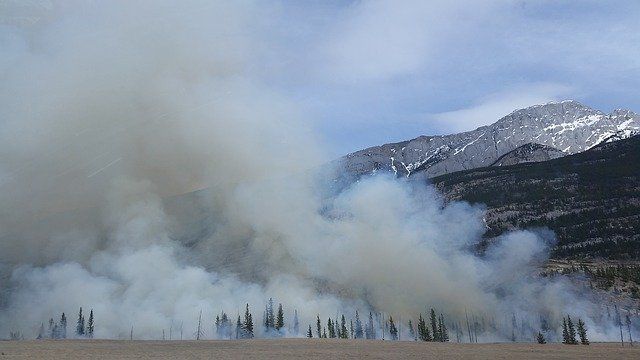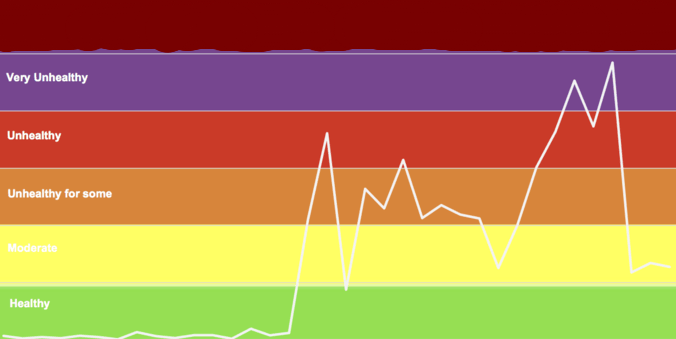

Though invisible to the naked eye, the air we breathe is loaded with tiny particulates made up of chemicals, allergens, dust, smoke, or soil in the form of (microscopic) solids, gases or liquids. When we burn fossil fuels for production, energy or mobility, it generates chemicals and gases which pollute the air. This poses a risk to human health and earth as a whole. One of the most minuscule categories of these airborne hazards are called particulate matter (PM) 2.5 (see what the EPA says about PM 2.5).
The Health effects of inhaling particulate matter have been widely studied in humans and animals and include asthma, lung cancer, and premature death. Particulate matter pollution is estimated to cause thousands of deaths per year in the United States (200 000 deaths per year in Europe). For this reason, the US Environmental Protection Agency (EPA) sets standards for PM10 and PM2.5 concentrations in urban air, and provides data so that the public can check the air quality index. The EPA regulates primary particulate emissions and precursors to secondary emissions (NOx, sulfur,and ammonia). Many areas in the US and Europe still frequently violate the particulate standards, though our air has gotten cleaner with respect to particulates, on average, over the last few decades.
What does PM 2.5 mean?
The 2.5 in PM 2.5 refers to the size of the pollutant, in micrometers. The tinniest thing which the human eye can see is at least 0.1 millimeters, about the width of a strand of fine air (70 micrometers). For you to see something as small as a micrometer, you need to use microscopes.
"Fine" particulate matter, as 2.5 PM is referred to by health agencies and pollution experts, possesses one attribute that makes them particularly dangerous. These particulates, and whatever microscopic toxins they may be carrying with them, can’t just penetrate your lungs. They are also small enough to pass directly into your bloodstream.
The Negative Impacts of PM 2.5
Depending on how healthy a person is, fine particulate matter will have various short term and long term health impacts of inhaling pm2.5, especially pm2.5 smoke. If you are exposed to levels between "Unhealthy for Sensitive Groups" (AQI 100) to "Hazardous" (300+), you might experience one or more of the following effects:
• Asthma Attacks
• Lowered Heart function, possibly leading in heart attack
• Reduced Lung function and exacerbation of lung conditions
• Wheezing or coughing
• Throat, nose or eye irritation
• Shortness Of breath
The immediate impact of PM 2.5 aside, particulate matter also ruins the environment by raising acidity in the water and soil bodies. That, in turn, impacts the planet's ability to generate food and support life. If the PM 2.5 levels in your area are elevated, it's important to safeguard your system from excessive exposure by staying indoors, or wear a
mask that can filter pm2.5 on high-pollution days.
In April, the CDC's NIOSH division recognized ASTM F3502, the the first and only national standard for barrier face coverings. Learn about the filtration and breathability requirements for reusable F3502 masks.





© 2021 Puraka Clean Air Technologies, LLC.